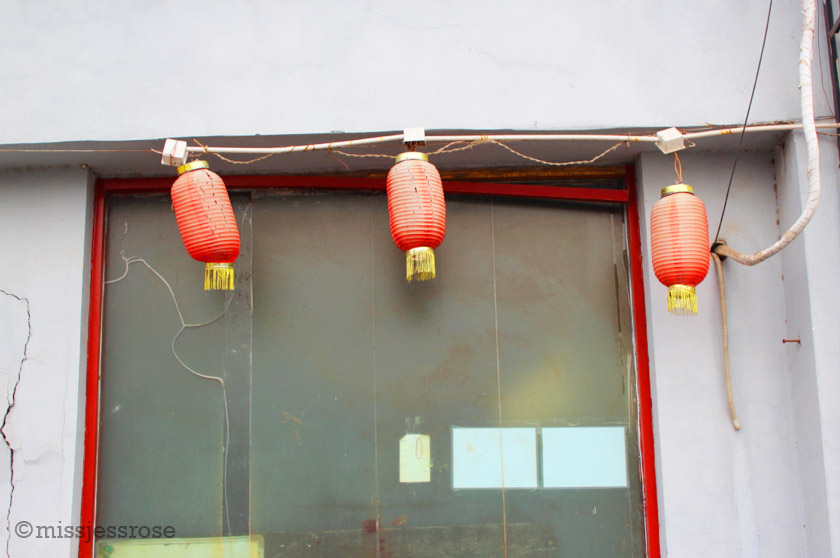Beijing is famous for its hutongs.
No, this is not a type of food, nor is it a Chinese rapper.
Hutongs are charming courtyard residencies clustered together and scattered about the city––they're a glimpse into old-world China. In Mongolian, the word means 'town,' a remnant from their 13th century invasion. Back then, single families lived in communal spaces such as this. As times grew tough, haphazard additions filled the once open-aired inner courtyards to accommodate family growth. Sadly, most traditional hutong areas were destroyed during the Cultural Revolution.
But a few remain.
Biking through the narrow alleyways of the hutong
Today the hutongs are shabby and crowded, but full of character.
We met this guy who was taking his birds for a walk. When we tried to speak with him, the only English word he knew was Obama. Thumbs up.
I keep imaging the hutongs full of life with little children running around and people at work. Walking through the narrow alleyways, I picture scenes from the famous Chinese film To Live, about a Beijing family surviving during Mao's reign.
The reality is, today these remaining communities have evolved and adapted to serve as tourist attractions rather than just private homes. Many of the exterior facing rooms have been converted into tiny shops catering to visitors like us.
Once a single family home, this hutong has been converted to a convenience shop
We stepped inside this one to warm up with some green tea.
Some people do still live here, tucked away in the small rooms hidden behind the shop fronts. Somehow this surprises me. I try to imagine what it would be like to grow up here, so vastly different from the quiet suburban street I grew up on in Michigan. Everything feels squished together and at the same time, exposed. It doesn't feel very homey.
“What we see before us is just one tiny part of the world. We get into the habit of thinking, This is the world, but that’s not true at all. The real world is in a much… deeper place than this. We just happen to forget all that.”
Strangers and tourists wander the alleyways peering into corridors, invading this unfamiliar realm of daily life. Our guide tells us that the elderly ladies wearing red armbands are volunteers on the lookout for potential thieves. Apparently drying laundry is the prime target.
It all comes down to perspective, doesn't it?
Steaming bread inside these round metal containers
Red rickshaws sitting empty in the wintertime, waiting to give tourists a ride around the hutong


















